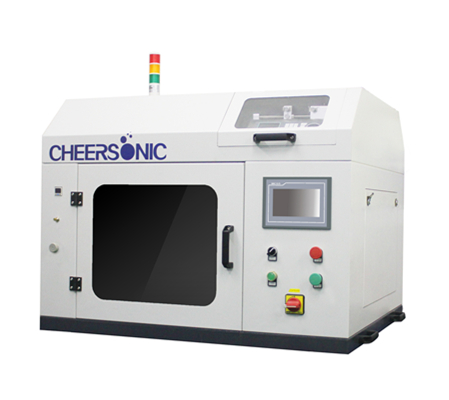Fuel Cell Catalyst Layer Coating
The direct methanol fuel cell (DMFC) is one of the most researched proton exchange membrane (PEM) fuel cell systems. Their low operating temperature and high energy density make them an attractive alternative for the electronic device market. In spite of these advantages the adoption and commercialization of DMFC fuel cells have been slow mainly because of the high manufacturing costs of the membrane electrode assembly (MEA), the most expensive component of direct methanol fuel cells.
The catalysts used in the MEA consist of either platinum or platinum alloys, which are historically expensive materials. In addition to the cost of materials, manufacturing of MEAs is still performed with techniques developed for small-scale manufacturing, resulting in high production costs. It would greatly benefit the fuel cell industry if alternative materials and cost-effective defect-free large-scale manufacturing techniques were developed for the MEA.
In PEM fuel cells, the catalyst layer is very thin (in the order of a few microns thick) and is too delicate to be manufactured separately from other components of the cell. This layer is usually formulated as liquid ink and can be deposited by a variety of coating techniques. Among these techniques, coating the catalyst layer directly on the PEM exhibits best performance and durability, in addition to having the fewest manufacturing steps.
Fuel Cell Catalyst Layer Coating systems are particularly suitable for these challenging applications by creating highly uniform, repeatable and durable coatings. From R&D to production, our anti-clogging technology can better control coating properties, significantly reduce material usage, and reduce maintenance and downtime. Ultrasonic spraying of other metal alloys, including platinum, nickel, iridium and ruthenium-based fuel cell catalyst coatings of metal oxide suspensions, can be used to manufacture PEM fuel cells, polymer electrolyte membrane (PEM) electrolyzers, and DMFC (direct methanol fuel). Battery) and SOFC (Solid Oxide Fuel Cell) can maximize load and battery efficiency.
Ultrasonic Fuel Cell Coating Video
About Cheersonic
Cheersonic is the leading developer and manufacturer of ultrasonic coating systems for applying precise, thin film coatings to protect, strengthen or smooth surfaces on parts and components for the microelectronics/electronics, alternative energy, medical and industrial markets, including specialized glass applications in construction and automotive.
The Company’s solutions are environmentally-friendly, efficient and highly reliable, and enable dramatic reductions in overspray, savings in raw material, water and energy usage and provide improved process repeatability, transfer efficiency, high uniformity and reduced emissions.
Cheersonic’s growth strategy is focused on leveraging its innovative technologies, proprietary know-how, unique talent and experience, and global reach to further develop thin film coating technologies that enable better outcomes for its customers’ products and processes. For further information, visit https://www.cheersonic-liquid.cn/en/.
- Get link
- X
- Other Apps
- Get link
- X
- Other Apps

Comments
Post a Comment